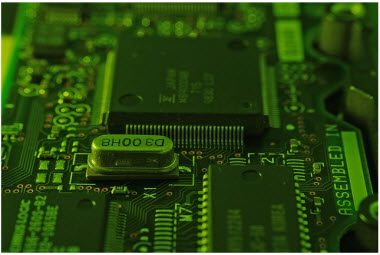Can we help you?
Contact us

Can we help you?
Contact us

Thank you for contacting us
Your form has been submitted successfully Our team will contact you again as soon as possible.
Whooppss...!! An error has occurred
Try sending later or write an email directly to areaempresas@ua.es

 PATENTED TECHNOLOGY
PATENTED TECHNOLOGY
INFO
SHEET
DOWNLOAD
EXECUTIVE
ABSTRACT
CONTACT DETAILS: Research Results Transfer Office-OTRI
University of Alicante
Tel.: +34 96 590 99 59
Email: areaempresas@ua.es
http://innoua.ua.es
Carbon-based/metal composites are materials showing excellent thermal performance. On the other hand, graphite flakes are attractive carbon based reinforcements in terms of thermal properties, price and machinability. However, their packed preforms pose insurmountable difficulties to metal infiltration.
Here a novel fabrication process is discussed which consists of using mixtures of graphite flakes and other material with different morphology. Preforms of such mixtures can be consolidated through infiltration of a variety of metals and alloys. The resulting material consists of alternating layers of graphite flakes and of a metal matrix composite, and has a high thermal conductivity on the flake plane and a thermal expansion coefficient that, by varying the relative amount of each component, can be tailored to fit the application requirements.

Heat dissipation in the new generation of microelectronic, optoelectronic and power electronics devices is a very serious problem for the electronic industries. Nowadays, the heat sinks used to maintain the devices temperature within acceptable limits are based upon high thermal conductivity materials such as metals and metal matrix composites.
Recently the use of carbon/metal composites is being explored. Two are the main competitors of those composites. Al/SiC composites, which represent the state of the art and that are currently manufactured and commercialized. Their price is low and they offer near net-shape fabrication versatility. However, these materials suffer of certain limitations, their relatively low thermal conductivity being the most important. The other competitor is the family of diamond/metal composites, that show a thermal conductivity ranging from 350 W/mK to 780 W/mK[12] R. Tavangar, J.M. Molina and L. Weber, Scripta Mater. 56 (2007), p. 357. Article | PDF (149 K) | View Record in Scopus | Cited By in Scopus (13). These recently commercialized materials represent the best choice for uses where price is not decisive. Nevertheless, recent contributions have demonstrated that these materials can be fabricated at lower prices by using mixtures of diamond and SiC particles. A clear drawback is the impossibility of machining, grinding or polishing.
The Spanish Research Group of University of Alicante has developed a process to obtain low cost and high thermal conductivity composites ready to be used in several semiconductor devices as heat sinks. These materials have a thermal conductivity higher than 400 Wm-1K-1 and a thermal expansion coefficient within the range 2-13·10-6 K-1 (at 20ºC- 300°C).
The developed composite material is composed of three phases:
1) Graphite flakes (phase A);
2) A second phase (phase B) or spacer phase which consists of either carbon fibers or SiC particles, keeps an open interconnected channel structure in the preform that allows infiltration of the liquid metal when pressure is applied. These materials preferably are ceramics (SiC, BN, AlN, TiB2 or diamond) or carbon fibers with a high thermal performance in at least one direction;
3) A third phase (phase C) consisting of a metal alloy.
Phases A and B are mixing to make a perform having strongly orientated compact layers of phase A that alternate with the more dilute layers of phase B. In this way, infiltration of the alloy (phase C) is enabled.

Although the three phases must have good thermal properties, it is phase A (graphite flakes) the one responsible for the properties of this innovative material. Phase B acts as a separator (or spacer materials) of the layers of phase A enabling the infiltration of phase C which consolidates the preform. The amount of alloy employed should be enough to fill the preform pores in order to obtain a composite material with the lower porosity possible.
The advantages of this new composite material are:
- A thermal conductivity and coefficient of thermal expansion better than that of the components used traditionally (mainly formed by copper or aluminium).
- Competitive production costs.
- The composite material is produced in forms and sizes most appropriate for its subsequent processing (cutting, machining, polishing, etc.) and use.
- The material herewith described is, in addition light and presents no problem for cutting, machining and polishing.
In conclusion, the main innovation aspect of this technology is producing a material suited for simple and low cost manufacturing of heat sinks in the electronics industry.
Several prototypes have been fabricated in order to evaluate their commercial and technical viability.
The composite material described can be applied mainly in the semiconductor industry for the manufacture of micro- and optoelectronic devices and power generators.
Additionally, it can be applied in any industrial sector for the manufacture of devices requiring a high thermal cooling capacity.
We are looking for companies interested in acquiring this technology for its exploitation. The research group is also open to other kind of collaboration (patent license agreement, transfer of user, manufacturing or commercializing rights to third parties, etc.).
This technology is the result of a European project and belongs to the University of Alicante.
This technology has patent protection:
Spanish patent:
- Application number: ES2304314.
- Application date: 27/03/2007.
University of Alicante has recently applied for the European patent (EPO) and the US patent.
Chemical Technology
Transport and Automotive
Carretera San Vicente del Raspeig s/n - 03690 San Vicente del Raspeig - Alicante
Tel.: (+34) 965 90 9959





